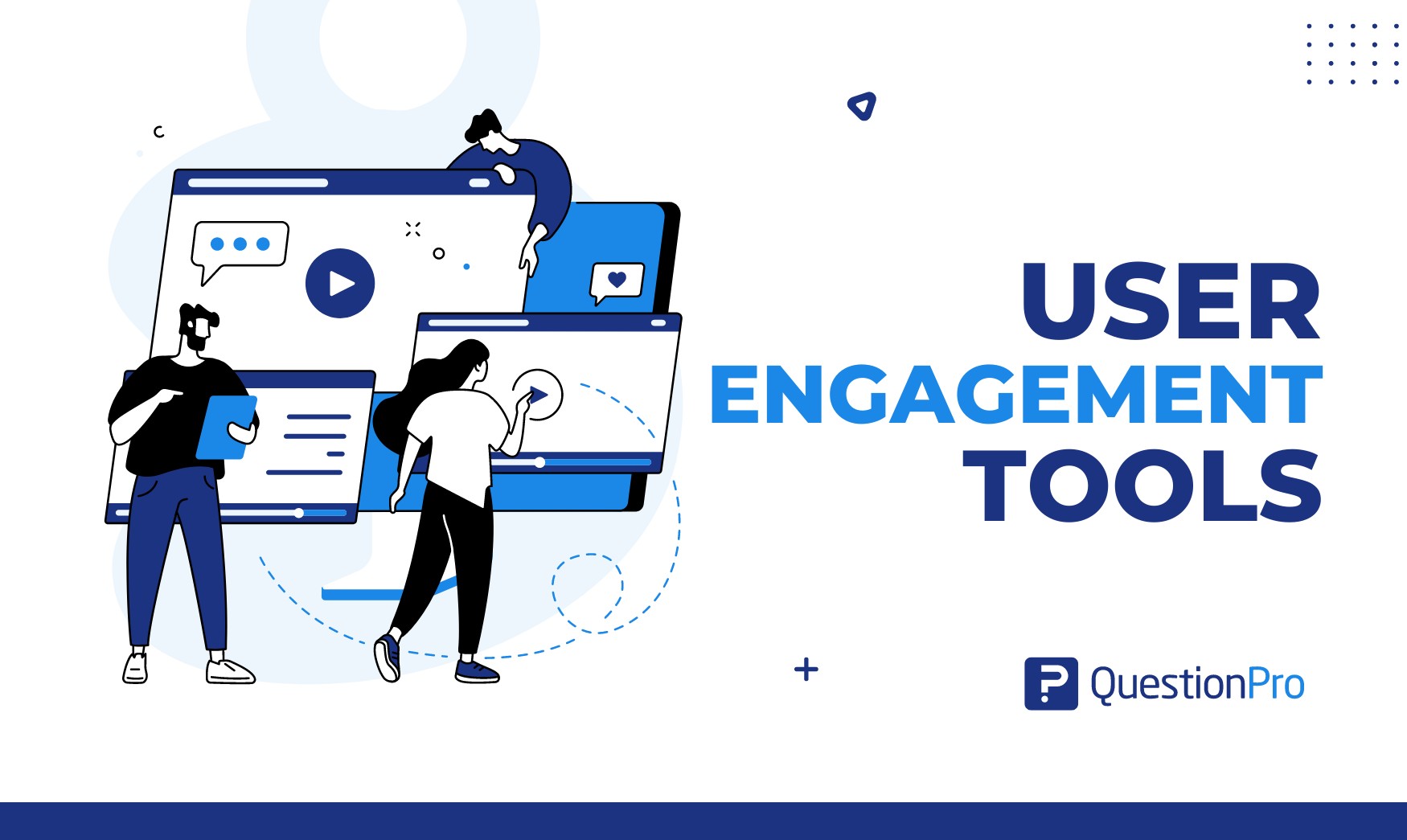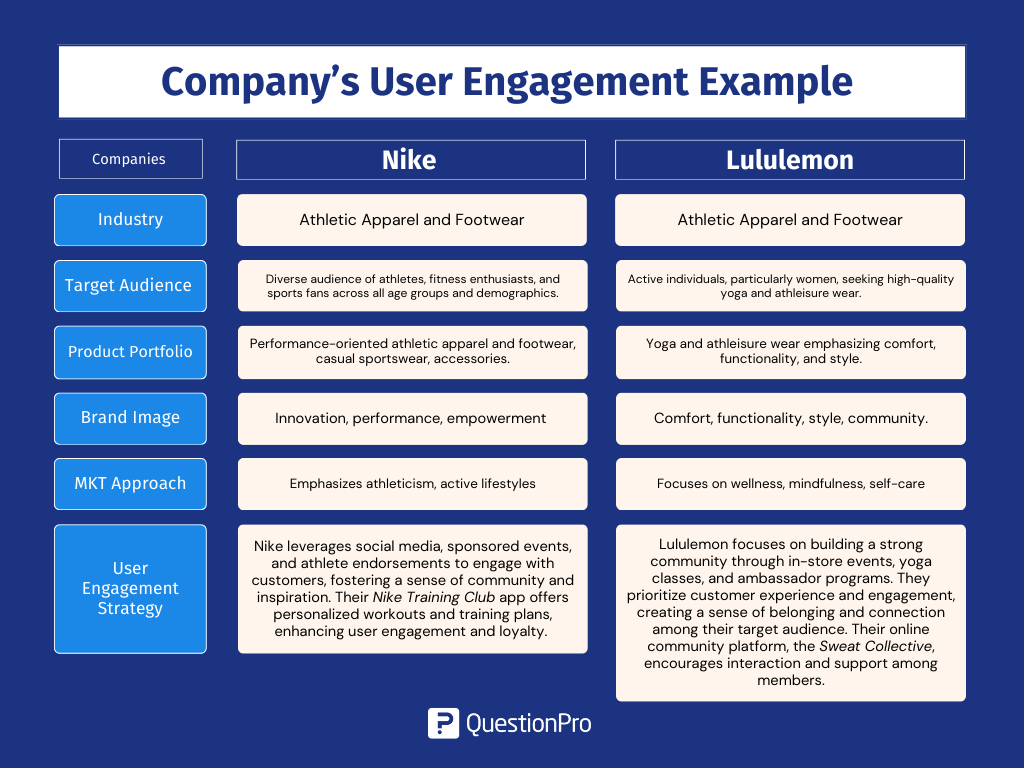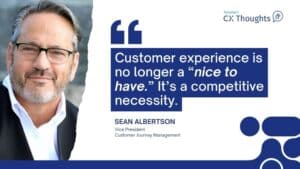
Besides making sales, the main goal for most companies is to have satisfied, loyal clients. That’s just one of the many reasons why going by instinct or by what it looks like on the surface is the main reason why companies experience churn. When users feel disconnected or dissatisfied with a product or service, they are more likely to leave and seek alternatives. Not to mention potential bad reviews and missed opportunities. How can we avoid it? We’re glad you asked.
The number of variations among a group of people compared with another is impressive once we realize the factors that influence the results. It’s remarkable to notice how different the users of two competitor companies can be.
Despite potential similarities, user demographics, preferences, and behaviors can vary significantly between two customer bases. Factors such as age, gender, income level, cultural background, and personal interests contribute to these differences. That’s why the more data we have from our users, the better we can understand their needs and demands ahead of time.
What Are User Engagement Tools?
User engagement tools are software solutions that gather and process specific data to determine engagement among a business’s audience. These tools can gather relevant insights through email, social media, live chat, surveys, and customer feedback forms.
Companies will enhance customer satisfaction by using user engagement tools, but that’s just one side of the coin. These tools also help us develop strategies to increase retention, drive brand loyalty, and boost conversion. Did somebody say sales?
Also, by regularly soliciting feedback and actively listening to customers, businesses can indicate that they value their input and are committed to delivering and improving a great customer experience.
In the table below, we provide an example of how two big companies from the same industry benefit from gathering data from their audience and implementing a strategy that aligns with them.

As we can see in the table, both Nike and Lululemon have a wide knowledge of their users.
Both companies also belong to the Athletic Apparel and Footwear industry; despite that, their strategies are widely different. As a result, both companies are successful in sales and customer loyalty.
Top 12 Best User Engagement Tool Companies
Now that we know why we need user engagement tools, let’s explore the best options in the market.
Top 1 – QuestionPro
Yes, we are that confident: QuestionPro CX Suite is the best option in the market, and our user engagement solutions are evidence of that. We offer a wide range of user engagement features, including customizable surveys, polls, quizzes, and feedback forms. You can also implement a range of engagement strategies to keep users satisfied and loyal.
Our survey and feedback management tools enable businesses to gather insights straight from their customers, allowing them to identify improvement areas and address customer concerns. Let’s explore how:
- Optimal Features: Get complete access to a wide set of tools designed to improve user engagement. Identify specific opportunities with customizable surveys, polls, advanced analytics, and reporting capabilities. Everything you need to understand and interact with your audience.
- User-Friendly Interface: Intuitive and user-friendly interface, we make it easy for businesses of all sizes to create, deploy, and analyze engagement strategies.
- Advanced Automation: Advanced automation capabilities to streamline the user engagement process. With automated email campaigns, triggered surveys, and real-time alerts, QuestionPro enables businesses to engage with their users promptly and personally.
- Scalability and Flexibility: Flexible pricing plans and customizable solutions. We adapt to your business requirements, ensuring you get the most value from your user engagement efforts.
- Proven Results: Countless businesses around the world trust us to drive user engagement and achieve their goals. With a track record of success and a diverse portfolio of satisfied clients, we deliver tangible results that translate into increased customer satisfaction, loyalty, and -of course- revenue.
Learn More about the QuestionPro CX Platform
Top 2 – HubSpot
Mainly known for its marketing automation capabilities. It offers tools for email marketing, social media management, live chat, and CRM integration to engage customers throughout their journey. It is a great option; however is important to consider some key factors:
- Cost: HubSpot can be expensive, particularly for small businesses or startups with limited budgets. The platform does offer a range of pricing plans, but the cost can add up quickly as businesses scale their usage or add additional features.
- Training: HubSpot’s interface is user-friendly, which is great. However, mastering all of its features and capabilities can take time and training. Businesses may need to finance specific resources to learn how to use the platform, particularly if they are new to marketing automation tools.
- Integration: This company integrates with many popular third-party applications and platforms; that said, it’s important to note that custom integrations may require technical expertise and additional resources to implement.
Top 3 – Intercom
It is a customer messaging platform that helps businesses to communicate with users through chat, targeted emails, and in-app messages, driving personalized interactions and user engagement. Key considerations:
- Complexity: Intercom does offer a strong set of features. However, it can be difficult to set up and manage for users unfamiliar with the platform.
- Not Suitable for Small Teams: Its features and capabilities can overwhelm small teams or businesses with limited resources.
- Customer Support: While it offers customer support options, some users have reported issues with responsiveness and resolution times. Businesses that require or prefer 24/7 customer support should look into better alternatives.
Top 4 – Zendesk
Primarily known for its customer support software, Zendesk also offers engagement tools such as live chat, knowledge base, and customer feedback management to facilitate seamless communication and interaction with customers. Key considerations:
- Dependency on Internet Connection: Zendesk is a cloud-based platform, which means it relies on a stable Internet connection to access and use its features. Users who lack a powerful internet connection may prefer an alternative.
- Limited Reporting and Analytics: Some users have reported limitations in Zendesk’s reporting and analytics capabilities, particularly in terms of customization and depth of insights. Businesses that don’t want to rely on third-party tools or manual processes to extract and analyze data effectively may want to pass on this company.
Top 5 – Salesforce
A leading CRM platform that helps businesses manage customer relationships, Salesforce also offers engagement tools like Marketing Cloud, Social Studio, and Pardot for personalized marketing and customer engagement. Key considerations:
- User Interface Design: Some users may find Salesforce’s user interface (UI) and user experience (UX) less intuitive or outdated than other modern software applications.
- Integration Challenges: Salesforce offers extensive integration capabilities, but integrating Salesforce with other systems and platforms can be difficult, especially when dealing with legacy systems or proprietary software. Companies may encounter compatibility issues, data migration challenges, or technical complexities during integration projects.
- Cost: It is often perceived as a high-cost solution, particularly for small and medium-sized businesses (SMBs) with limited budgets. The initial investment in Salesforce licenses, implementation, customization, and ongoing maintenance can be significant, making it less accessible for some organizations.
Top 6 – Drift
A marketing platform that enables businesses to engage prospects and customers through chatbots, targeted messaging, and AI-powered automation. Key considerations:
- Limited Customization: Drift offers some customization options for chatbots and messaging workflows, but companies may find the level of customization limited compared to more advanced platforms, restricting the ability to tailor the user experience to specific business needs or branding requirements.
- Dependency on AI: Its reliance on AI and automation for customer interactions means that it may not be suitable for all use cases or customer preferences. Some users may prefer human interactions or may have complex queries that require human intervention, which may not be fully supported by Drift’s chatbots.
Top 7 – Google Analytics
While primarily a web analytics tool, Google Analytics provides insights into user behavior and engagement metrics, helping businesses optimize their digital marketing efforts and enhance user experiences. Key considerations:
- Privacy Concerns: Google Analytics collects user data for tracking and analysis purposes, which may raise privacy concerns among users in light of increasing regulations and consumer awareness around data privacy.
- Limited Real-Time Reporting: It provides real-time reporting features, but they are limited compared to other analytics tools. Businesses requiring instant insights into user behavior may find the real-time reporting capabilities of Google Analytics insufficient for their needs.
- Dependency on Google: Google Analytics is owned and operated by Google, which means businesses are dependent on Google’s infrastructure and policies for data processing and storage. Any changes or disruptions to Google’s services could potentially impact the availability and functionality of Google Analytics.
Top 8 – SurveyMonkey
It is a popular survey platform that allows businesses to create, distribute, and analyze surveys to gather feedback, measure satisfaction, and drive user engagement. Key considerations:
- Limited Survey Distribution Options: It offers diverse survey distribution methods, including email invitations, web links, and social media sharing. However, some users find its survey distribution options limited compared to other survey platforms.
- Customization Options: While it offers a range of survey design options, some users may find its customization capabilities limited compared to more advanced survey platforms. Businesses with specific branding requirements or complex survey design needs may find SurveyMonkey’s customization options insufficient.
Top 9 – Qualtrics
Known for its enterprise feedback management platform, Qualtrics offers a suite of user engagement tools, including customer experience management, employee engagement software, and market research solutions. Key considerations:
- Costly Pricing: Qualtrics is known for its high enterprise-level features and functionality prices. This can be challenging for small businesses or organizations with restricted budgets, making it less accessible compared to other survey tools.
Top 10 – UserTesting
A user research platform that allows businesses to conduct remote usability testing, gather feedback, and gain insights into user behavior to optimize digital experiences and drive engagement. Key considerations:
- Limited Testing Scope: It offers comprehensive testing options, including remote usability testing and interviews but it may have limitations in terms of testing scope and sample size. Businesses conducting large-scale or longitudinal studies may find UserTesting’s capabilities inadequate for their needs.
- Potential Bias in Feedback: UserTesting feedback may be subject to participant bias or subjective interpretation, as feedback is based on individual experiences and opinions. Companies should consider the validity and reliability of feedback received through UserTesting and supplement it with other user research methods.
Top 11 – Hotjar
A behavior analytics tool that provides a user feedback tool that helps businesses understand how users interact with their websites and apps, enabling them to optimize conversion rates, improve user experience, and boost engagement. Key considerations:
- Limited Integrations: Compared to other user engagement tools, Hotjar may have limited integrations with third-party tools and platforms. This can be a limitation for businesses that rely on specific integrations for their workflows, analytics, or customer relationship management.
- Limited Customization: Hotjar may have limited customization options for surveys, polls, and feedback widgets compared to other user engagement tools. This can restrict businesses’ ability to tailor feedback collection methods to their specific needs and preferences.
Customer engagement tools and user engagement tools are closely related concepts, often overlapping in their functions and goals. However, they are used in slightly different contexts:
Customer Engagement Tools vs User Engagement Tools
Customer engagement tools can be seen as encompassing user engagement tools. While user engagement tools are specifically aimed at enhancing the interaction and experience of users within a digital platform, customer engagement tools take a more holistic approach, focusing on the entire customer journey.
For example, customer engagement tools might use data collected through user engagement tools to personalize marketing campaigns, tailor communication, and improve customer service. They help ensure that the engagement doesn’t stop at just using the product, but extends to after-sales support, feedback collection, and ongoing communication.
In this way, customer engagement tools play a crucial role in bridging the gap between product usage and overall customer satisfaction. They ensure that users remain engaged not just within the product but also with the brand itself, leading to a more cohesive and comprehensive customer experience.
In summary, while user engagement tools are focused on optimizing the interaction between the user and the product, customer engagement tools broaden the scope to include all interactions that a customer has with a brand, ensuring a consistent and valuable experience across all touchpoints.
Customer Engagement Tools:
Customer engagement tools are primarily focused on building and maintaining strong relationships with customers. They help businesses interact with their customers through various channels like email, social media, chat, and more. These tools are designed to keep customers engaged with the brand by providing valuable content, personalized communication, and support. In essence, customer engagement tools are about creating meaningful interactions that lead to customer satisfaction, loyalty, and, ultimately, advocacy.
User Engagement Tools:
User engagement tools, on the other hand, are more focused on engaging users of a product or service, often in a digital environment. These tools are designed to enhance the user experience by providing features that keep users active and involved within an app, website, or platform. User engagement tools may include in-app messaging, push notifications, gamification, and personalized content that encourage users to spend more time on the platform and to interact more deeply with the product’s features.
Customer Engagement Platform vs Customer Relationship Management System
Both customer engagement platforms (CEPs) and customer relationship management systems (CRMs) are designed to improve interactions with customers, but they serve different purposes.
CEPs focus on facilitating meaningful engagements across multiple channels, such as email, social media, and live chat, to build relationships and conduct customer loyalty while CRMs are primarily focused on managing customer data, tracking interactions, and streamlining sales and marketing processes to enhance customer relationships and drive revenue growth.
While CRMs provide a centralized database for storing customer information and managing interactions, CEPs offer a suite of tools and capabilities for actively engaging customers through targeted communication, personalized messaging, and proactive support.
We Recommend Reading: Best Employee Engagement Tools & Techniques
Key Elements to Look For in User Engagement Tools
When evaluating user engagement tools for a business, it’s essential to consider key elements to ensure they meet the organization’s needs and goals. These elements include:
- Multichannel Capabilities: Look for tools that support engagement across multiple channels, including email, social media, live chat, and SMS, to reach users wherever they are.
- Personalization Features: Choose tools that offer advanced personalization capabilities, such as dynamic content, audience segmentation, and behavioral targeting, to deliver tailored experiences that resonate with users.
- Analytics and Reporting: Prioritize tools that provide robust analytics and reporting features. These features allow us to track engagement metrics, measure performance, and gain actionable insights into user behavior.
- Automation and Integration: Opt for tools that offer automation capabilities and seamless integration with other systems, such as CRM platforms and marketing automation software, to streamline workflows and maximize efficiency.
- Compliance and Security: Ensure that the tools you choose comply with data protection regulations and industry standards, such as GDPR and ISO 27001, to safeguard user privacy and protect sensitive information.
Conclusion
The main takeaway is that happy users and customers are the key to a successful business. Using user or audience engagement tools makes it easier to gather the right information from users to understand their needs, pains, behaviors, and any relevant information in a professional way without being invasive, which will allow companies to better serve them.
We address various common challenges associated with user engagement tools by offering a comprehensive suite of solutions. A wide range of customizable survey templates, branding options, and advanced survey logic features for businesses aspiring for more customization options for surveys. You can create highly tailored surveys that align with your brand identity and research goals.
For organizations concerned about high-pricing plans associated with user engagement tools, QuestionPro offers competitive pricing plans with flexible options based on the number of surveys, responses, and features required. This ensures that businesses of all sizes and budgets can access powerful survey solutions without breaking the bank. You can start today for free!







